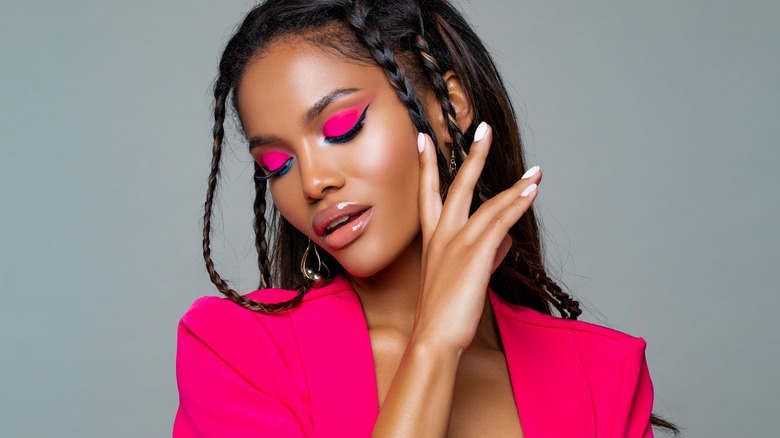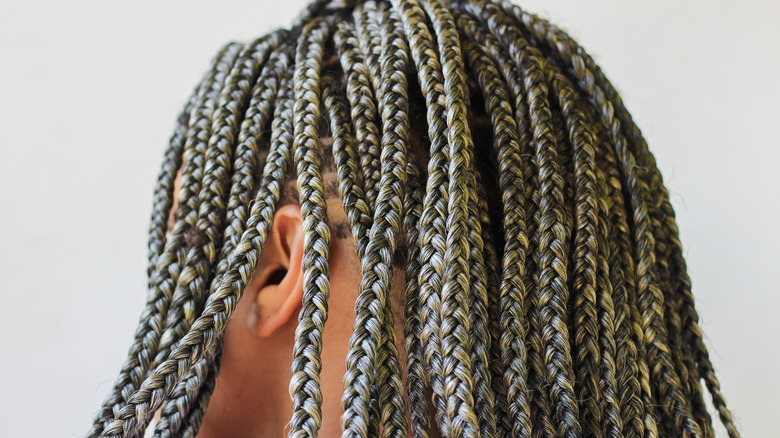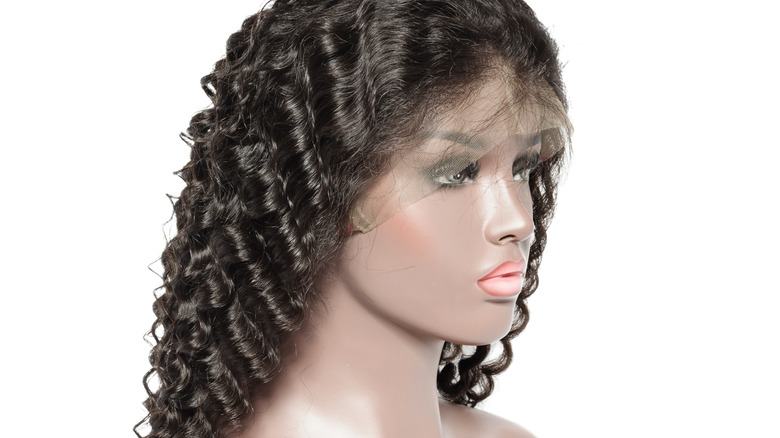What Is A Protective Hairstyle?
If you've ever spent any time flipping through hairstyle tutorials on a social media platform like TikTok, YouTube, Pinterest, or Instagram, you have probably seen certain styles referred to as protective. Unless you happen to be familiar with what is known as natural hair — kinky or coily textured curly hair that has not been treated by chemical relaxers — this term can sound a little unfamiliar and confusing.
While anyone can wear their hair in a protective style for the sake of hair health or fashion if they wish to, these styles were originally intended to protect delicate hair types that are prone to dryness, breakage, and damage and they date all the way back to 3000 B.C., as reported by Black Doctor. Since the ends of the hair are most likely to break or fray, most protective styles feature tucked ends. But there is much more to know about these unique styles, especially if you plan to try one out.
Braids and twists
The most popular protective hairstyles are braids and twists. The main difference between the two techniques is the number of strands that are intertwined to create the style. Braiding usually involves three strands of hair which are combined into a woven pattern. Twists typically only involve two hair strands, which are wrapped into a rope-like shape. Some of the most common styles of braids include box, French, Dutch, cornrow, Fulani, and micro (via NaturallyCurly). Today's most in-demand twist styles include flat, Havana, mini, kinky, and twisted varieties of dreadlocks. It's important to note that traditional dreadlocks are not twisted. According to Dreadlocks.org, this is a common — and costly — salon mix-up.
Many people who favor protective styles choose to have supplemental hair added to their braids and twists. This process involves extensions made of human or synthetic hair being braided in with natural hair. The result is added length and/or thickness. Supplemental hair can also create a smoother, shinier texture and help to cover and protect the ends of the wearer's natural hair.
Buns and wigs
Additional options for those looking for a style that will protect their natural strands include updos and wigs. Certain types of braids and twists can be pulled up and wrapped into a bun for additional protection. Buns alone, however, are considered protective because they involve twisting or tucking in the ends of the hair (via Afrocenchix). Similar updos that shield the ends from damage, such as chignons and beehives, also qualify as protective styles.
A common alternative to using braids, twists, and updos for protection is to completely cover the natural hair with a wig. Wigs protect your hair not only from everyday stressors like dry air and sleeping but also from styling. The pulling, combing, and manipulation required to get the hair into a protective style can cause a certain amount of damage on its own, including traction alopecia, defined by Healthline as hair loss caused by repeated pulling. Wearing a wig means giving your hair and scalp a break from all those factors.


